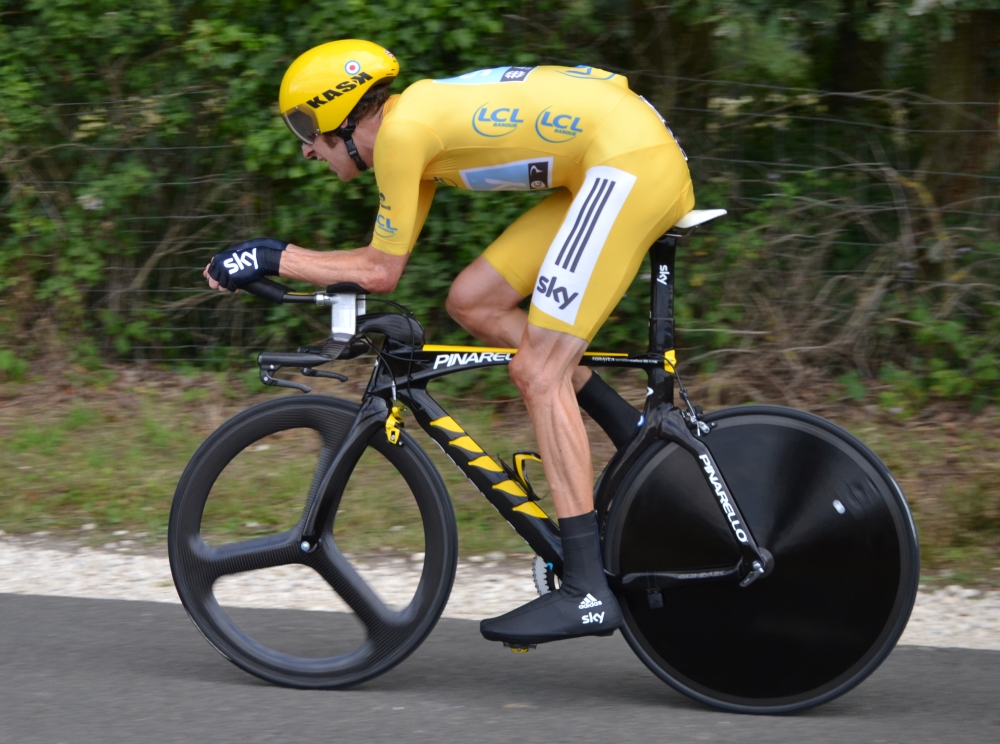
Two new studies from PLoS ONE today, each one focusing on favorite substances of mine - curcumin and caffeine.
In the first one, researchers found curcumin (the yellow stuff in turmeric) to be as effective as pharmaceuticals in stopping the replication of respiratory syncytial virus (RSV), a major cause of bronchitis, asthma, and severe lower respiratory tract disease in infants and young children. Not only that, it also inhibits the epithelial responses to RSV, including the release of pro-inflammatory cytokines. Another use for one of my favorite spices.
In the other study, researchers gave caffeine (CAF) to recreationally trained male cyclists (5 mg.kg−1 body mass) and had them ride a 4000 m time trial. Turns out the caffeine increased mean power output and reduced the total time. Interestingly, in the CAF group, the anaerobic contribution during the 2200-, 2400-, and 2600-m intervals was significantly greater. However, the mean anaerobic and aerobic contributions were similar between conditions. There were also no significant differences between CAF and placebo for anaerobic work, aerobic work, or total work. Moreover, there was no difference for integrated electromyography, blood lactate concentration, heart rate, and ratings of perceived exertion between the conditions. So it seems for cyclists, the performance increase from caffeine manifests in the middle of a 4000 m time trial.
Here are the titles, abstracts, citations, and such.
Curcumin Prevents Replication of Respiratory Syncytial Virus and the Epithelial Responses to It in Human Nasal Epithelial Cells
Kazufumi Obata, Takashi Kojima, Tomoyuki Masaki, Tamaki Okabayashi, Shinichi Yokota, Satoshi Hirakawa, Kazuaki Nomura, Akira Takasawa, Masaki Murata, Satoshi Tanaka, Jun Fuchimoto, Nobuhiro Fujii, Hiroyuki Tsutsumi, Tetsuo Himi, Norimasa Sawada
Full Citation:Abstract
The human nasal epithelium is the first line of defense during respiratory virus infection. Respiratory syncytial virus (RSV) is the major cause of bronchitis, asthma and severe lower respiratory tract disease in infants and young children. We previously reported in human nasal epithelial cells (HNECs), the replication and budding of RSV and the epithelial responses, including release of proinflammatory cytokines and enhancement of the tight junctions, are in part regulated via an NF-κB pathway. In this study, we investigated the effects of the NF-κB in HNECs infected with RSV. Curcumin prevented the replication and budding of RSV and the epithelial responses to it without cytotoxicity. Furthermore, the upregulation of the epithelial barrier function caused by infection with RSV was enhanced by curcumin. Curcumin also has wide pharmacokinetic effects as an inhibitor of NF-κB, eIF-2α dephosphorylation, proteasome and COX2. RSV-infected HNECs were treated with the eIF-2α dephosphorylation blocker salubrinal and the proteasome inhibitor MG132, and inhibitors of COX1 and COX2. Treatment with salubrinal, MG132 and COX2 inhibitor, like curcumin, prevented the replication of RSV and the epithelial responses, and treatment with salubrinal and MG132 enhanced the upregulation of tight junction molecules induced by infection with RSV. These results suggest that curcumin can prevent the replication of RSV and the epithelial responses to it without cytotoxicity and may act as therapy for severe lower respiratory tract disease in infants and young children caused by RSV infection.
Obata K, Kojima T, Masaki T, Okabayashi T, Yokota S, et al. (2013, Sep 18). Curcumin Prevents Replication of Respiratory Syncytial Virus and the Epithelial Responses to It in Human Nasal Epithelial Cells. PLoS ONE, 8(9): e70225. doi:10.1371/journal.pone.0070225
* * * * *
Caffeine Alters Anaerobic Distribution and Pacing during a 4000-m Cycling Time Trial
Ralmony de Alcantara Santos, Maria Augusta Peduti Dal Molin Kiss, Marcos David Silva-Cavalcante, Carlos Rafaell Correia-Oliveira, Romulo Bertuzzi, David John Bishop, Adriano Eduardo Lima-Silva
Abstract
Full Citation:
The purpose of the present study was to investigate the effects of caffeine ingestion on pacing strategy and energy expenditure during a 4000-m cycling time-trial (TT). Eight recreationally-trained male cyclists volunteered and performed a maximal incremental test and a familiarization test on their first and second visits, respectively. On the third and fourth visits, the participants performed a 4000-m cycling TT after ingesting capsules containing either caffeine (5 mg.kg−1 of body weight, CAF) or cellulose (PLA). The tests were applied in a double-blind, randomized, repeated-measures, cross-over design. When compared to PLA, CAF ingestion increased mean power output [219.1±18.6 vs. 232.8±21.4 W; effect size (ES) = 0.60 (95% CI = 0.05 to 1.16), p = 0.034] and reduced the total time [419±13 vs. 409±12 s; ES = −0.71 (95% CI = −0.09 to −1.13), p = 0.026]. Furthermore, anaerobic contribution during the 2200-, 2400-, and 2600-m intervals was significantly greater in CAF than in PLA (p<0.05). However, the mean anaerobic [64.9±20.1 vs. 57.3±17.5 W] and aerobic [167.9±4.3 vs. 161.8±11.2 W] contributions were similar between conditions (p>0.05). Similarly, there were no significant differences between CAF and PLA for anaerobic work (26363±7361 vs. 23888±6795 J), aerobic work (68709±2118 vs. 67739±3912 J), or total work (95245±8593 vs. 91789±7709 J), respectively. There was no difference for integrated electromyography, blood lactate concentration, heart rate, and ratings of perceived exertion between the conditions. These results suggest that caffeine increases the anaerobic contribution in the middle of the time trial, resulting in enhanced overall performance.
Santos RdA, Kiss MAPDM, Silva-Cavalcante MD, Correia-Oliveira CR, Bertuzzi R, et al. (2013, Sep 18). Caffeine Alters Anaerobic Distribution and Pacing during a 4000-m Cycling Time Trial. PLoS ONE, 8(9): e75399. doi:10.1371/journal.pone.0075399
No comments:
Post a Comment